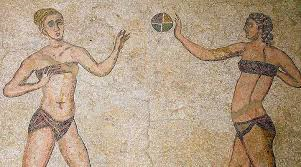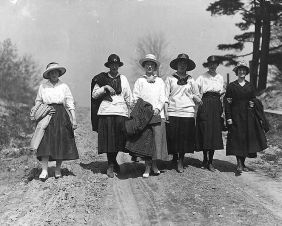 In 45 Master Characters: Mythic Models for Creating Original Characters, Victoria Lynn Schmidt distinguishes the Heroine’s Journey from Joseph Campbell’s Hero’s Journey. Her Heroine’s Journey arc is similar to Maureen Murdock’s arc but delineates several of the stages in a way that encompasses a broader range of topics and experience.
In 45 Master Characters: Mythic Models for Creating Original Characters, Victoria Lynn Schmidt distinguishes the Heroine’s Journey from Joseph Campbell’s Hero’s Journey. Her Heroine’s Journey arc is similar to Maureen Murdock’s arc but delineates several of the stages in a way that encompasses a broader range of topics and experience.
The stages in Schmidt’s Heroine’s Journey include:
- ILLUSION OF THE PERFECT WORLD. The heroine has coping strategies that they believe will work in the world as they believe it to be. Such coping strategies can include: naivete (nothing will happen to me); men/dominant group will take care of me; I am exceptional and will be “one of the boys”; everything will work out if I can please my mother/father/husband/boss/etc.
- BETRAYAL/DISILLUSIONMENT. The heroine’s coping strategies fall apart either because they are betrayed by someone, because they realize their coping strategy is toxic/ineffective, or because they realize their assumed world is not what they thought.
- THE AWAKENING & PREPARING FOR THE JOURNEY. The heroine may initially become hopeless but decides to do something about their plight. Others may try to discourage the heroine, but the force of the betrayal pushes the heroine on. The whole direction of their life is changed. The heroine finds the tools they need but is still looking outside themselves.
- THE DESCENT—PASSING THE GATES OF JUDGMENT. The heroine experiences fear, abandonment, guilt, and/or shame associated with giving up their old way of being. They may be ashamed of their new identity. They may feel guilty about sexual feelings/expression. Or they may have fears/shame associated with expressing themselves, honoring intuition, and/or letting go of relationships that aren’t working for them. The heroine must give up control and all of their tools/defenses/“weapons” to move forward.
- THE EYE OF THE STORM. In this stage (which corresponds with Murdock’s Boon of Success) the heroine experiences a small taste of success which brings about a false sense of security. The heroine may experience momentary—but not sustained—success because those around the heroine do not want to be led by a woman/minority for very long, because others begin to undermine them, or because the crisis passes and the heroine is left trying to fill multiple roles that are impossible for a single person to fulfill. (In female hero’s journeys, the story likely ends here.)
- DEATH/ALL IS LOST. In this stage (which corresponds to Murdock’s spiritual aridity/death) the heroine realizes that their original coping strategies are not effective and that their new-found skills/tools cannot sustain them. Maintaining a state of respect requires constant (unsustainable) fighting, and as things get worse, the heroine feels there is no hope. Despite their best efforts, they fail and accept defeat.

- SUPPORT. The heroine meets someone (who may also be a spirit/goddess/muse within) who offers support. The heroine embraces the “feminine” aspect of support and accepts that they are not completely self-sufficient. The heroine embraces their need for support as a positive thing.
- REBIRTH/MOMENT OF TRUTH. The heroine finds their strength and resolve with the help of support. They “awaken” and see the world and their role within it differently. The heroine understands that brains, heart, and courage will be required, and they face their own fear with compassion.
- RETURN TO A WORLD SEEN THROUGH NEW EYES. The heroine sees the world for what it is. Their experience will change others—but receiving recognition for being a change-maker is not the heroine’s priority. The consequences of their experience may extend beyond their lifetime or be “anonymous.” The heroine’s reward is spiritual and internal. They know themselves better and are committed to mutual interactions with their world. This new outlook brings new strategies for living.
Below is the arc laid out in chart form.

So useful – thank you!
LikeLiked by 1 person
This is an excellent editing aid for my novel. Although I have a male protagonist, his arc fits “The Heroine’s Journey” to a T.
Thank you for this clear and helpful breakdown of this story structure.
LikeLiked by 2 people
This ones better than that Maureen character.
LikeLiked by 1 person
Chaturasura, I too for a time felt that Victoria Schmidt’s analysis was broader and applicable to more plots and stories or situations, and thus might be a “better” description of the Heroine’s Journey. However, there are some stories, such as “I Want to go to Jail” (see our blog post on this play) that fit much better into Maureen Murdock’s framework than in Schmidt’s. Similarly, there are some heroine’s journey stories that follow Schmidt’s framework more closely than Murdock’s. For me, the key is not which is better or right, but which of many potential arcs explains the author or character’s or story’s orientation and experience of the world. Knowing this gives us, as readers (and potential writers) a better sense of perspective on the story and can help us to better understand our own experiences.
LikeLike